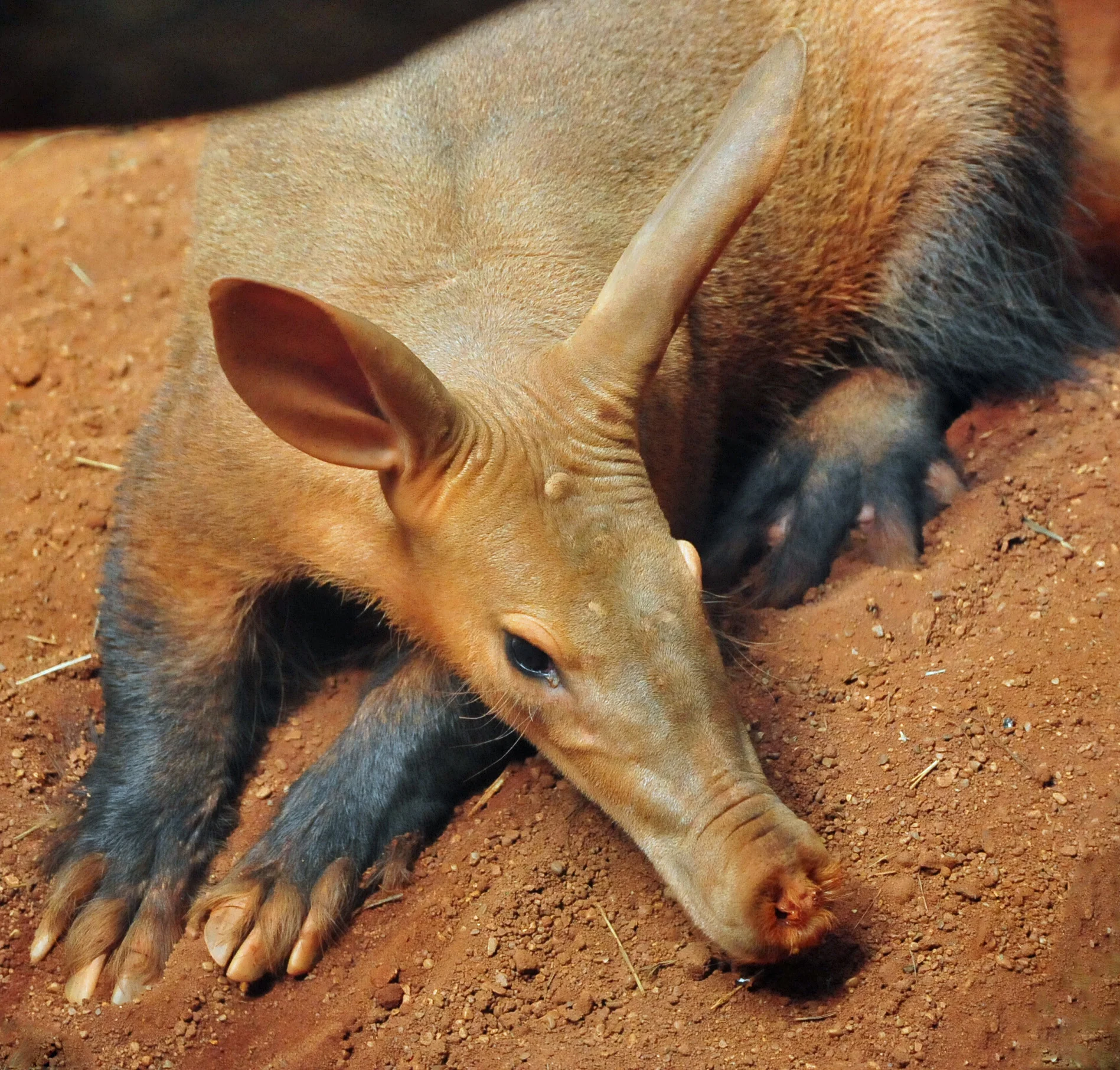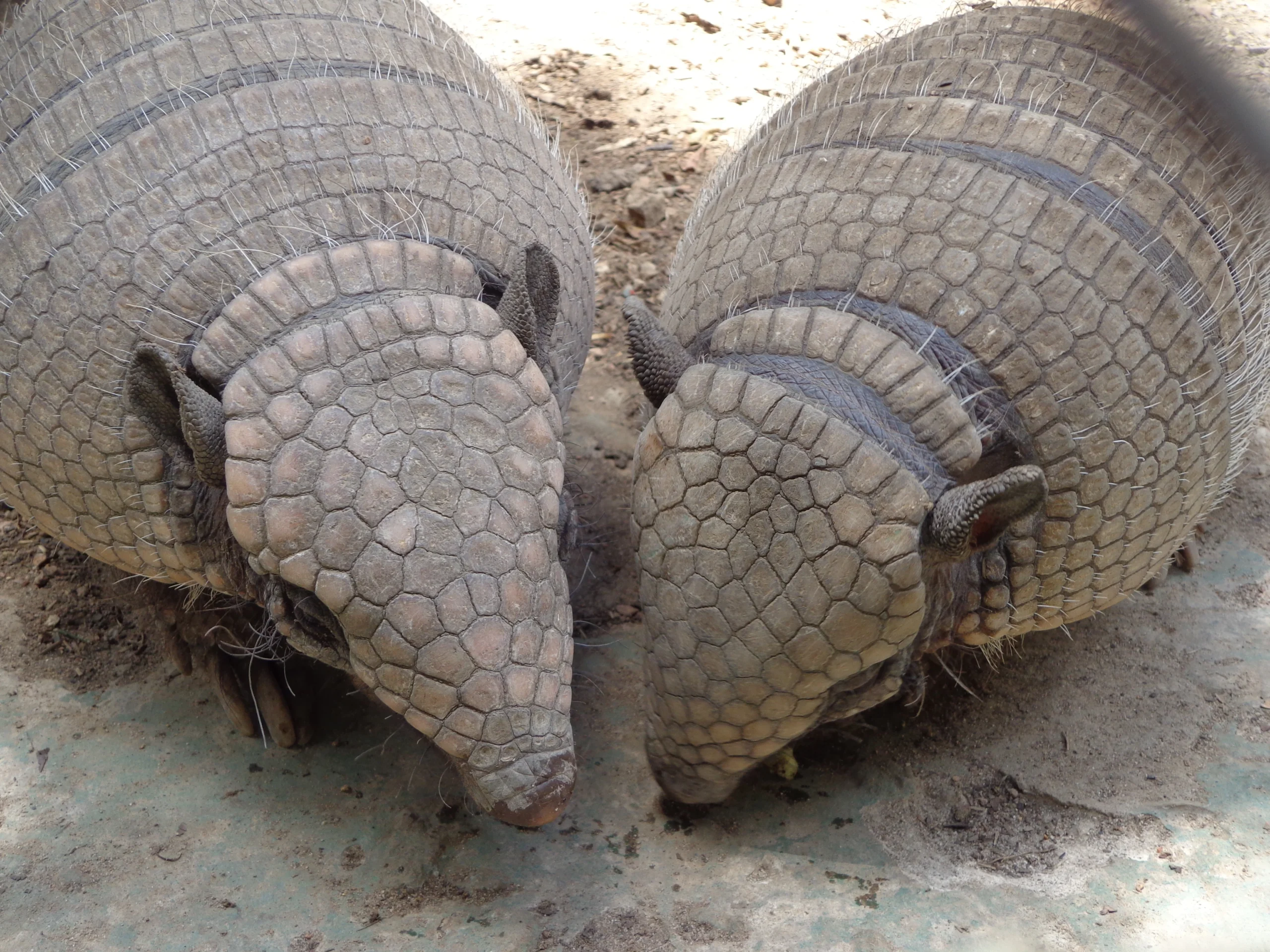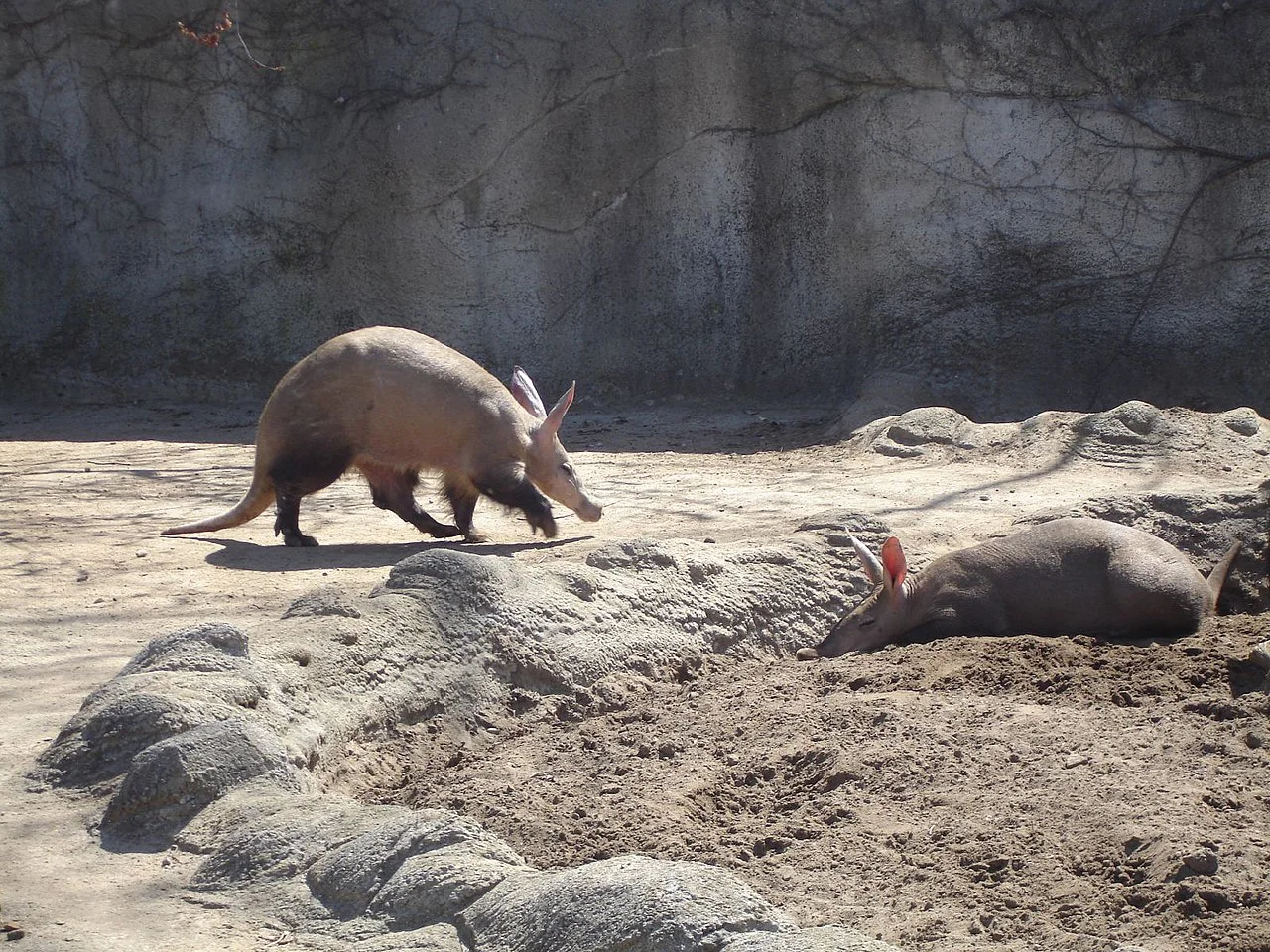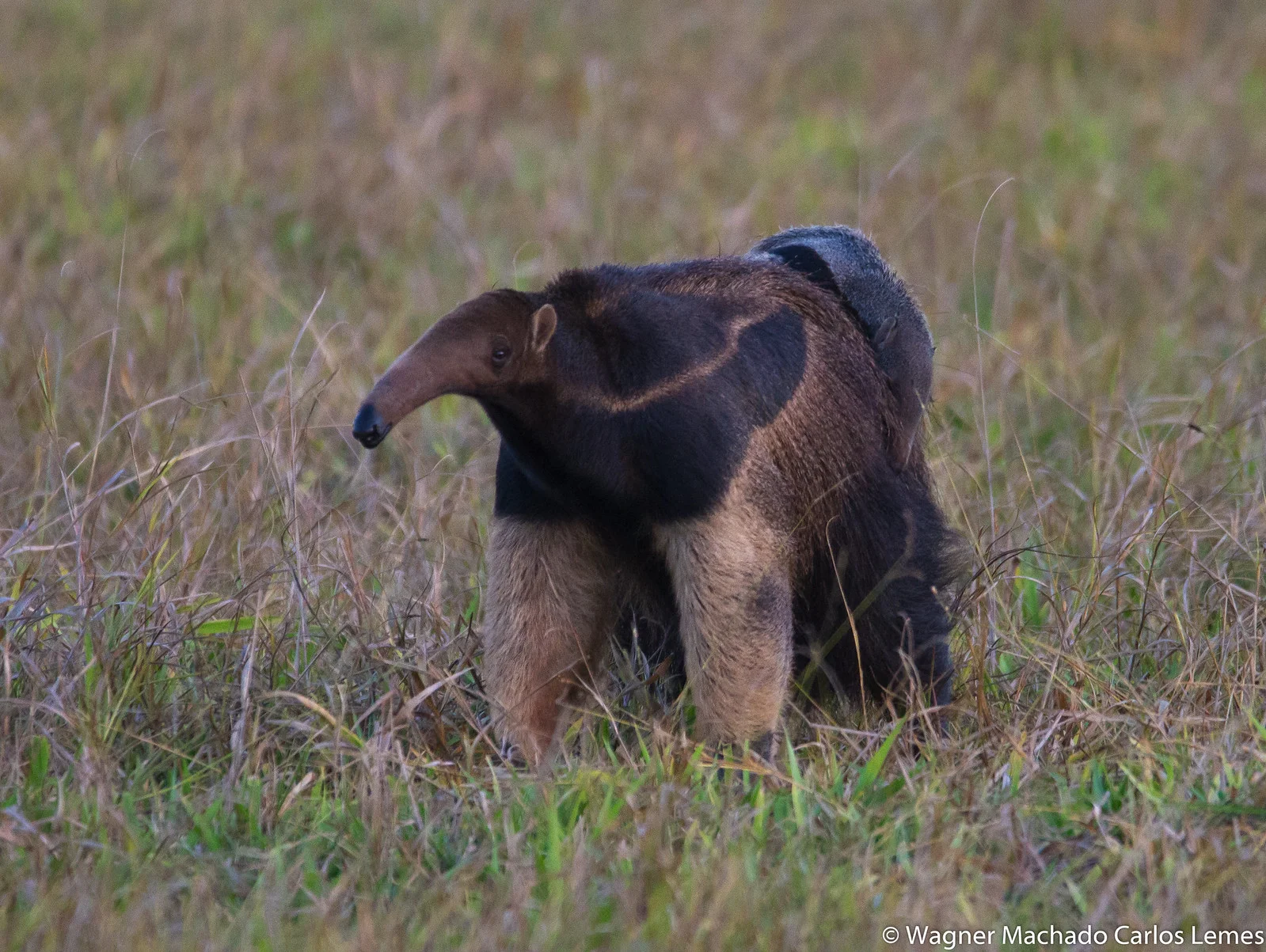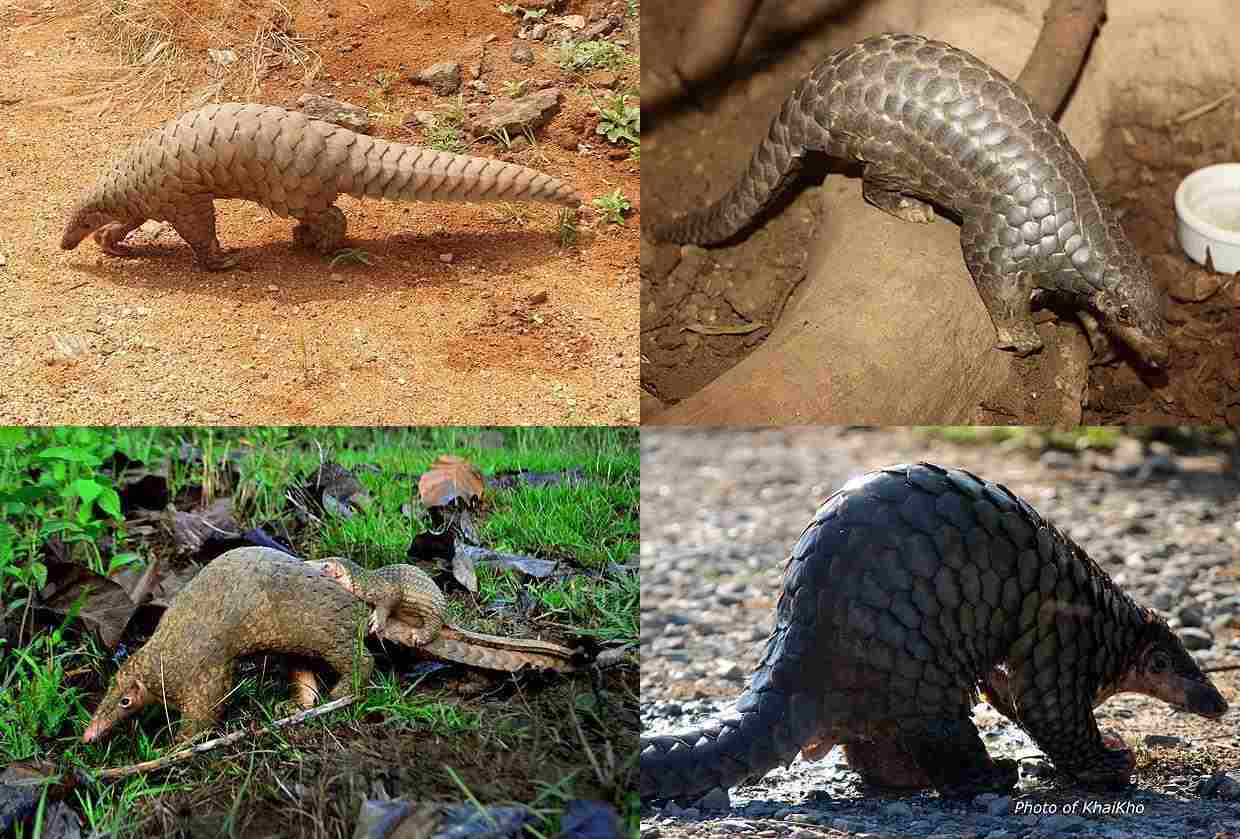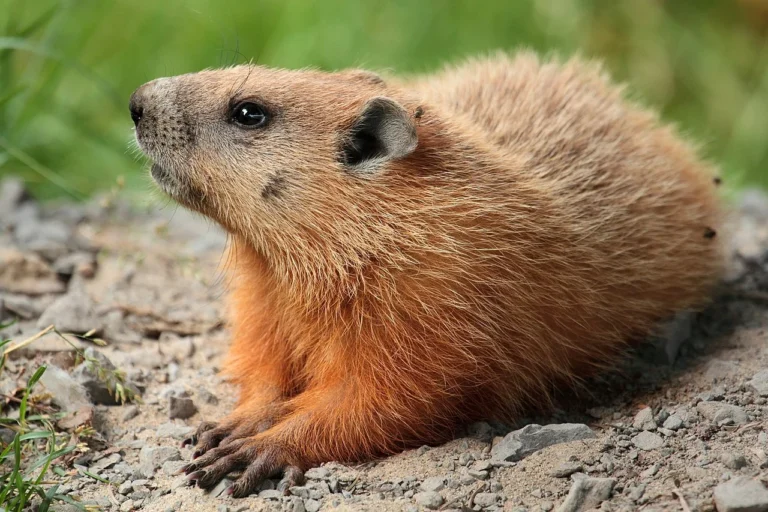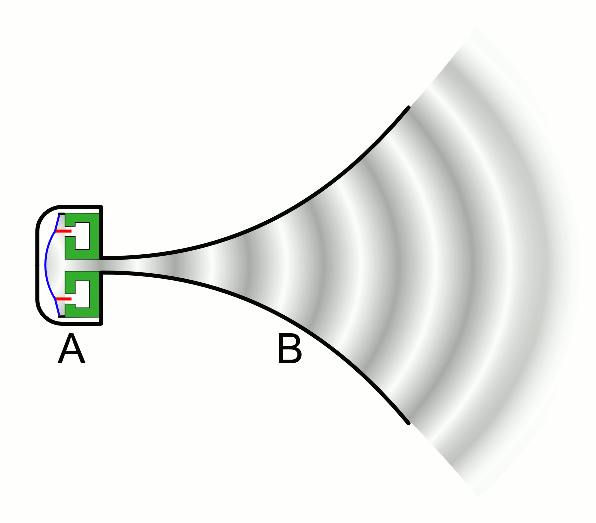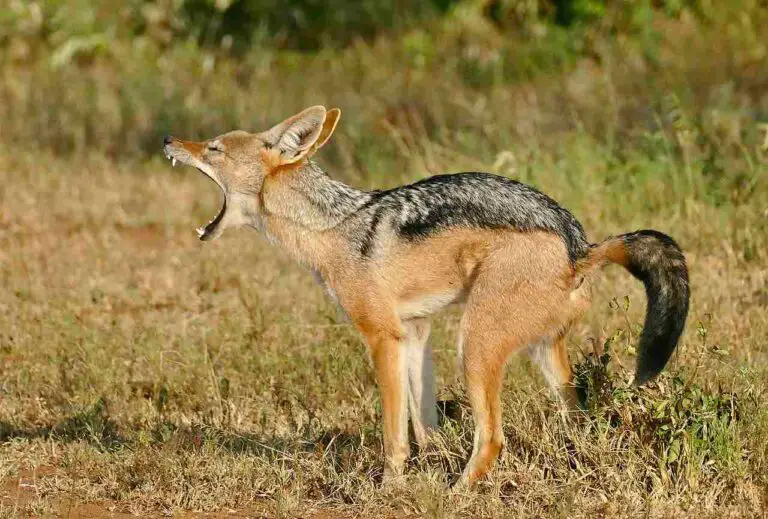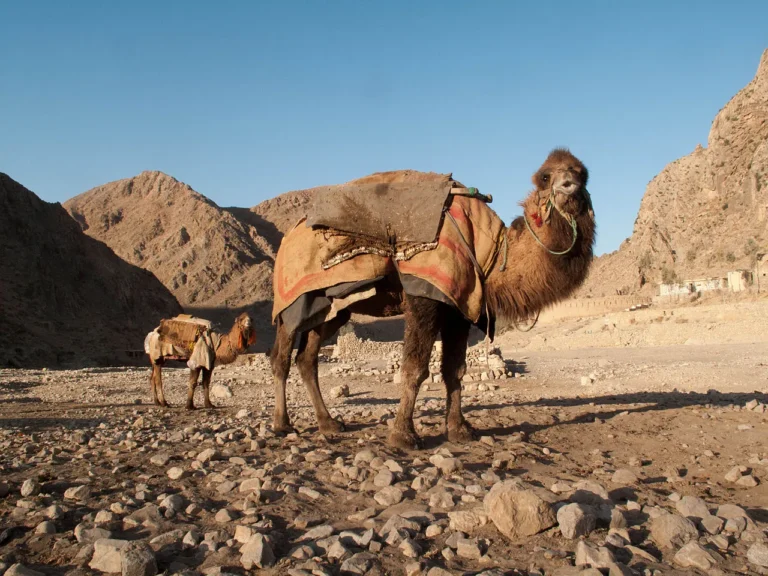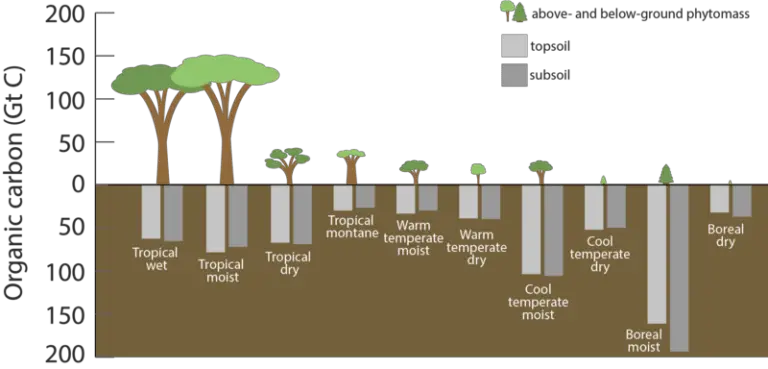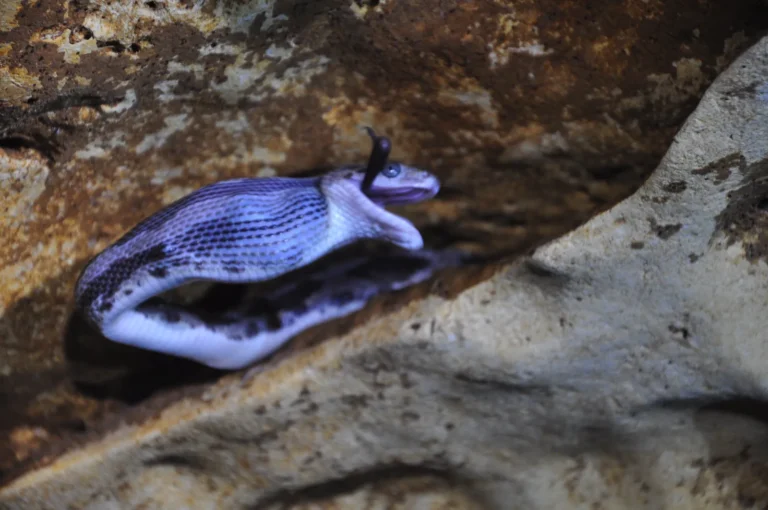Armadillo Vs Aardvark Size, Weight, Overall Comparison
Contrasting an armadillo with an aardvark unveils intriguing facets of two distinct species, each adapted to its native continent. While the armadillo thrives naturally in the Americas, the aardvark’s habitat is rooted in Africa. Examining their taxonomic affiliations, the armadillo belongs to the Dasypodidae family, while the aardvark finds its place within the Orycteropodidae family, underscoring the evolutionary divergence between these unique mammals.
I. Native Habitats:
– The armadillo and aardvark inhabit different continents, with the armadillo naturally found in the Americas and the aardvark residing in Africa. This geographical distinction shapes their respective ecosystems and evolutionary paths.
II. Taxonomic Families:
– Armadillos belong to the Dasypodidae family, showcasing their taxonomic affiliation within the order Cingulata. In contrast, aardvarks fall under the Orycteropodidae family, placing them in the Tubulidentata order. These taxonomic differences highlight the evolutionary divergence between the two species.
III. Armadillo’s Bony Plates:
– Armadillos boast distinctive bony plates, providing them with protective armor. This unique feature is characteristic of their adaptation strategy, setting them apart visually and serving as a defense mechanism in their American habitats.
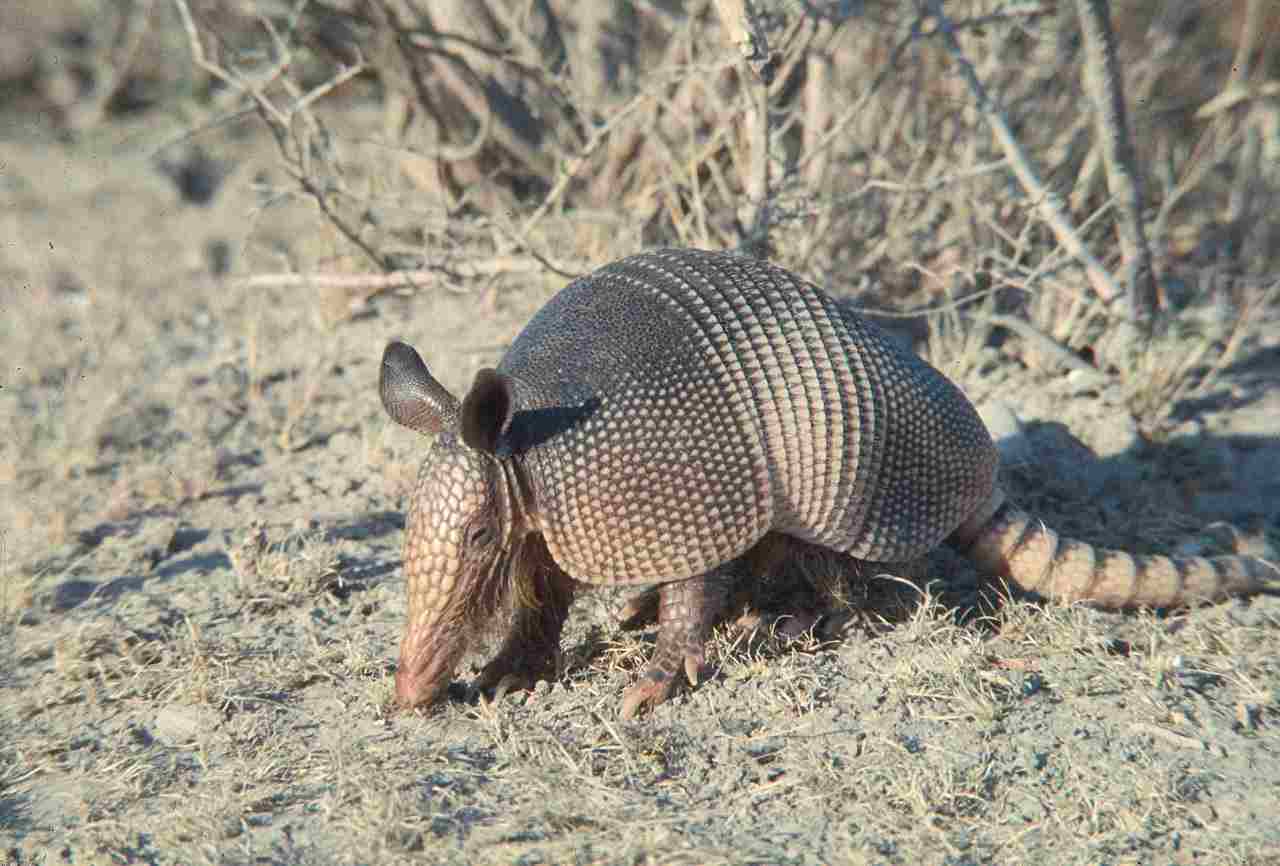
IV. Aardvark’s Short Fur:
– Aardvarks, in contrast, possess short fur that contributes to their appearance and insulation needs. This fur distinguishes them aesthetically from armadillos, highlighting the diverse adaptations in response to their African environment.
V. Size Similarity with Aardvark’s General Larger Size:
– While both armadillos and aardvarks share a similar size, aardvarks are generally larger. This subtle difference in size reflects their distinct evolutionary paths and adaptation to their respective environments.
VI. Aardvark’s Size and Overall Flexibility Advantage:
– In a potential confrontation, the aardvark holds an advantage over the armadillo due to its larger size and overall flexibility. This advantage in size and physical attributes underscores the pragmatic implications of their evolutionary adaptations in a competitive ecosystem.
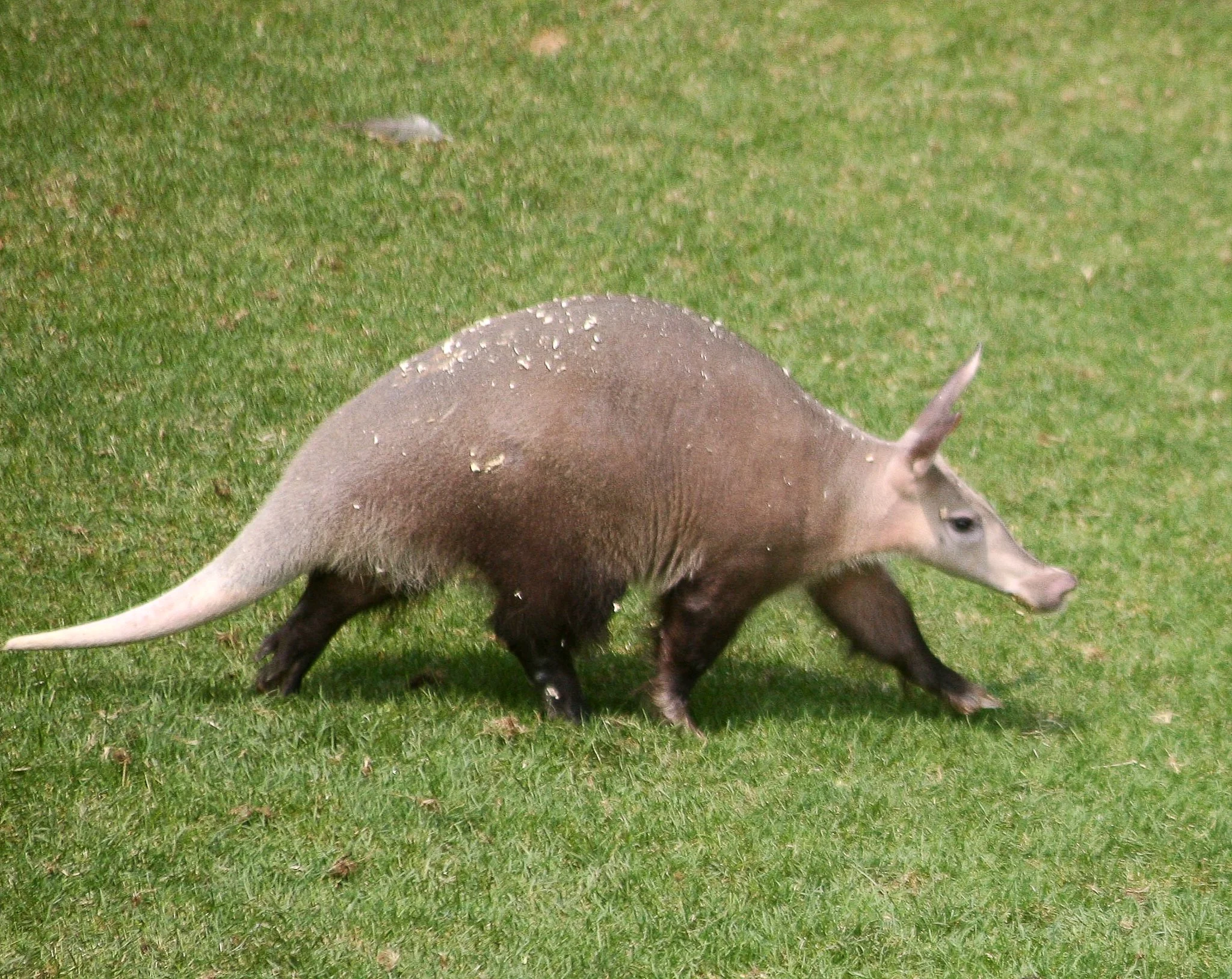
VII. Real-life Predator Dynamics:
– In a real-life encounter, the aardvark’s size and overall flexibility would likely give it an edge over the armadillo, showcasing the practical consequences of their evolutionary adaptations in the context of survival and competition.
VIII. Conservation Considerations:
– Recognizing the unique traits and potential conflicts between armadillos and aardvarks emphasizes the need for tailored conservation strategies. Preserving the natural habitats of these distinct species contributes to the overall health and balance of ecosystems, safeguarding biodiversity in their respective continents.
*Details of Comparison
| Criteria | Armadillo | Aardvark |
| Appearance | Armored, bony plates with leathery skin. |
Slender, furless bodies with a long snout.
|
| Size | 5-59 inches (species dependent). | 4-8 feet. |
| Weight | 3 oz to 120 lbs. | 110-180 lbs. |
| Bite Force (PSI) | Limited for insectivorous diet. |
Notable for breaking into termite mounds.
|
| Physical Offensive Advantages | Clawed forelimbs for digging. |
Sharp claws for termite mound excavation.
|
| Physical Defensive Advantages | Bony armor protection. |
Quick digging to escape predators.
|
| Speed | Generally slow-moving. |
Can reach speeds of 30 km/h (18 mph).
|
| Agility | Moderately agile, especially in digging. |
Highly agile with a slender body.
|
| Senses | Reliance on a strong sense of smell. |
Better overall sensory capabilities.
|
| Overall Physical Capacity | Unique capacities tailored to ecological niches. |
Unique capacities tailored to ecological niches.
|
| Habitat Preference(s) and Geographic Region | Diverse habitats in the Americas. |
Primarily in African savannas and grasslands.
|
| Tracks | Clawed tracks. |
Distinctive three-toed imprints.
|
| Lifespan | 4-30 years. | 10-20 years. |
| Mode of Feeding | Insectivores, with aardvarks specializing in termites. |
Insectivores, with aardvarks specializing in termites.
|
| Intelligence | Limited cognitive abilities, focused on survival instincts. |
Moderate intelligence, demonstrated in foraging strategies.
|
| Social Behavior | Typically solitary with minimal social interactions. |
Predominantly solitary with occasional social interactions during mating.
|
| Mode of Reproduction | Gives birth to litters. |
Single offspring born after a gestation period of about seven months.
|
| Parental Behavior | Limited parental care; offspring become independent quickly. |
Extended parental care for the single offspring.
|
| Proximity to Human-Inhabited Areas | Some adaptability to urban environments. |
Typically avoids human-inhabited areas.
|
| Behavior Toward Humans | Generally shy but may display defensive behavior if threatened. |
Typically avoids human contact but may become defensive if provoked.
|
| Danger Posed to Humans | Generally not dangerous; may carry diseases like leprosy. |
Not inherently dangerous; may become defensive if provoked.
|
| Associated Precautions | Caution advised due to potential disease transmission; avoid direct contact. |
Precautions include maintaining a safe distance to prevent stress or defensive behavior.
|
| Conservation Status | Varied conservation statuses. |
Near Threatened due to habitat loss and declines in termite populations.
|
1. Taxonomy
Armadillo:
Order: Cingulata
Family: Dasypodidae
Genus: Various (e.g., Dasypus, Tolypeutes)
Species: Multiple species, e.g., Nine-banded armadillo (Dasypus novemcinctus)
Aardvark:
Order: Tubulidentata
Family: Orycteropodidae
Genus and Species: Orycteropus afer
2. Appearance
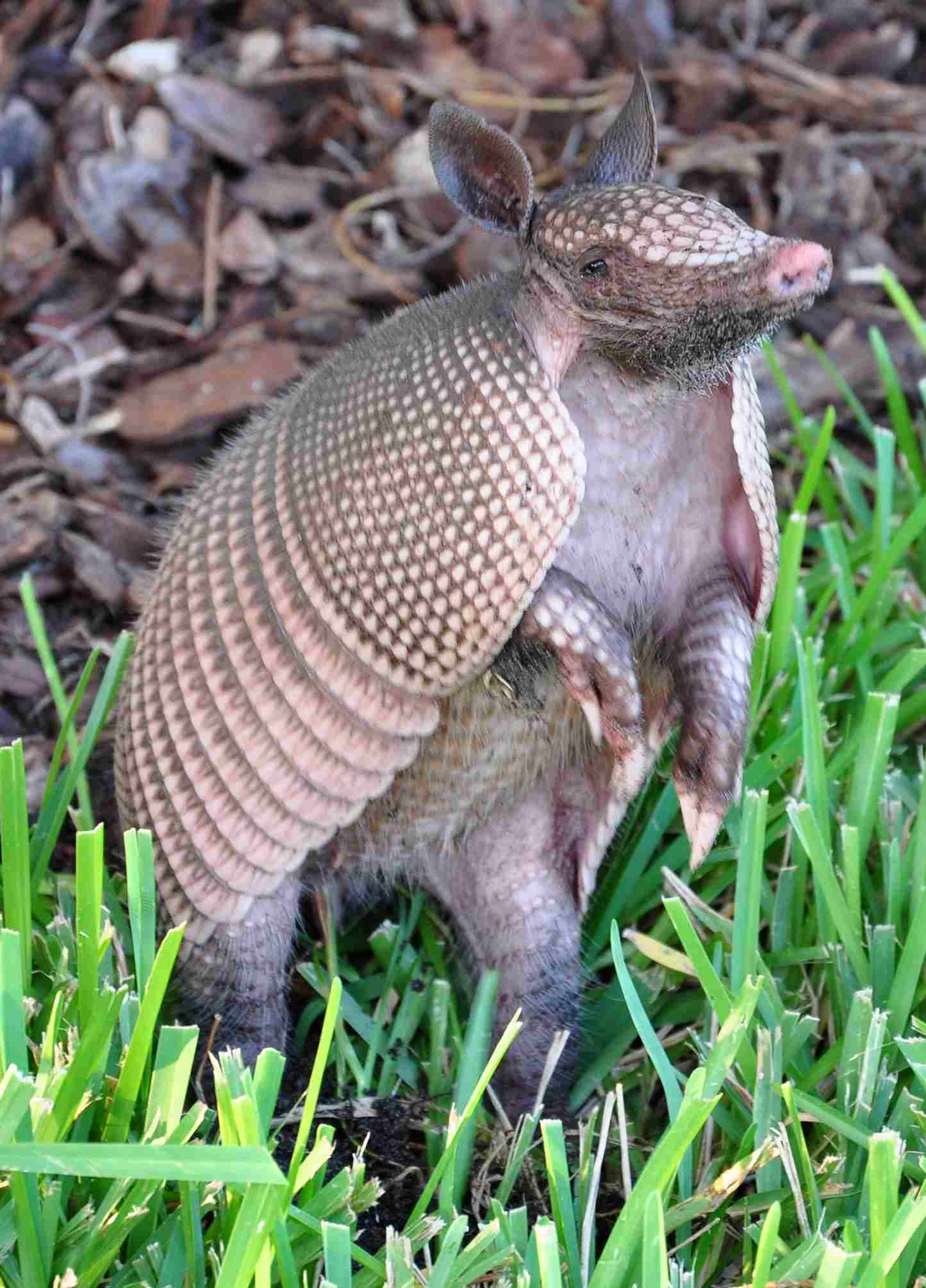
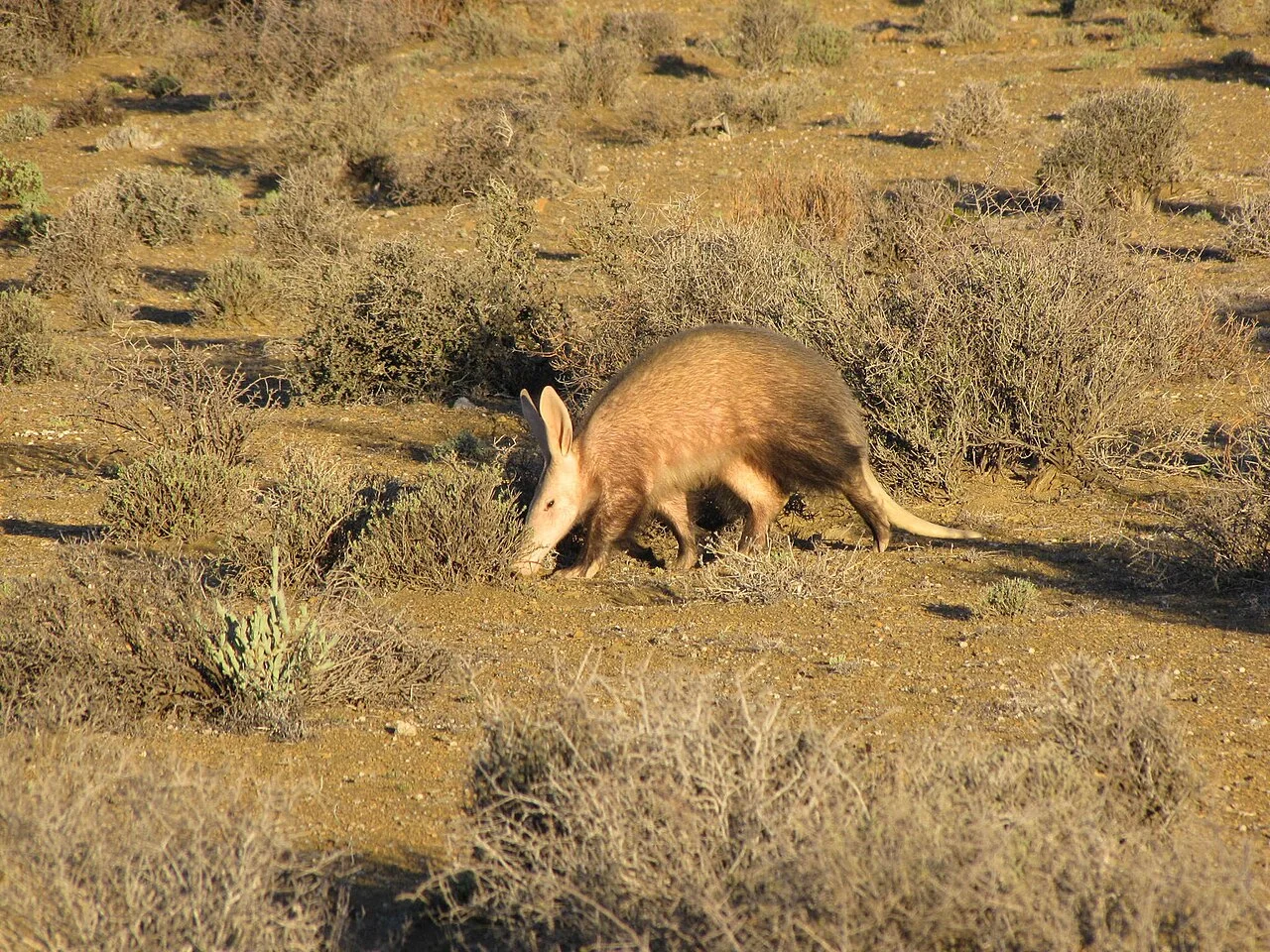
Armadillo:
Armored, bony plates cover their body.
Shell-like appearance with leathery skin.
Aardvark:
Slender, long snout and large, rabbit-like ears.
Smooth, hairless body with a grayish-brown color.
Comparison:
Armadillos have a distinct armor, while aardvarks have a sleek, furless appearance.
Ecological Implications:
Armadillo’s armor provides protection against predators.
Aardvark’s lack of armor may necessitate reliance on other defensive strategies.
3. Size
Armadillo:
Varies by species; typically 5-59 inches (head to tail).
Aardvark:
Length ranges from 4 to 8 feet.
Comparison:
Aardvarks are generally larger than armadillos.
Ecological Implications:
Size affects resource needs and interactions within ecosystems.
4. Weight
Armadillo:
Ranges from 3 ounces to 120 pounds (depending on species).
Aardvark:
Typically 110-180 pounds.
Comparison:
Aardvarks are generally heavier than armadillos.
Ecological Implications:
Weight impacts energy consumption, foraging patterns, and interactions with other species.
5. Bite Force (PSI)
Armadillo:
Limited bite force, adapted for insectivorous diet.
Aardvark:
Notable bite force for breaking into termite mounds.
Comparison:
Aardvarks possess a stronger bite force than armadillos.
Ecological Implications:
Bite force relates to feeding strategies and ecological roles in their respective habitats.
6. Physical Offensive Advantages
Armadillo:
Clawed forelimbs aid in digging for food.
Aardvark:
Sharp claws for excavating termite mounds.
Comparison:
Both species use claws for offensive purposes, but armadillos focus on digging, while aardvarks specialize in termite mound excavation.
Ecological Implications:
These offensive adaptations contribute to their roles as insectivores.
7. Physical Defensive Advantages
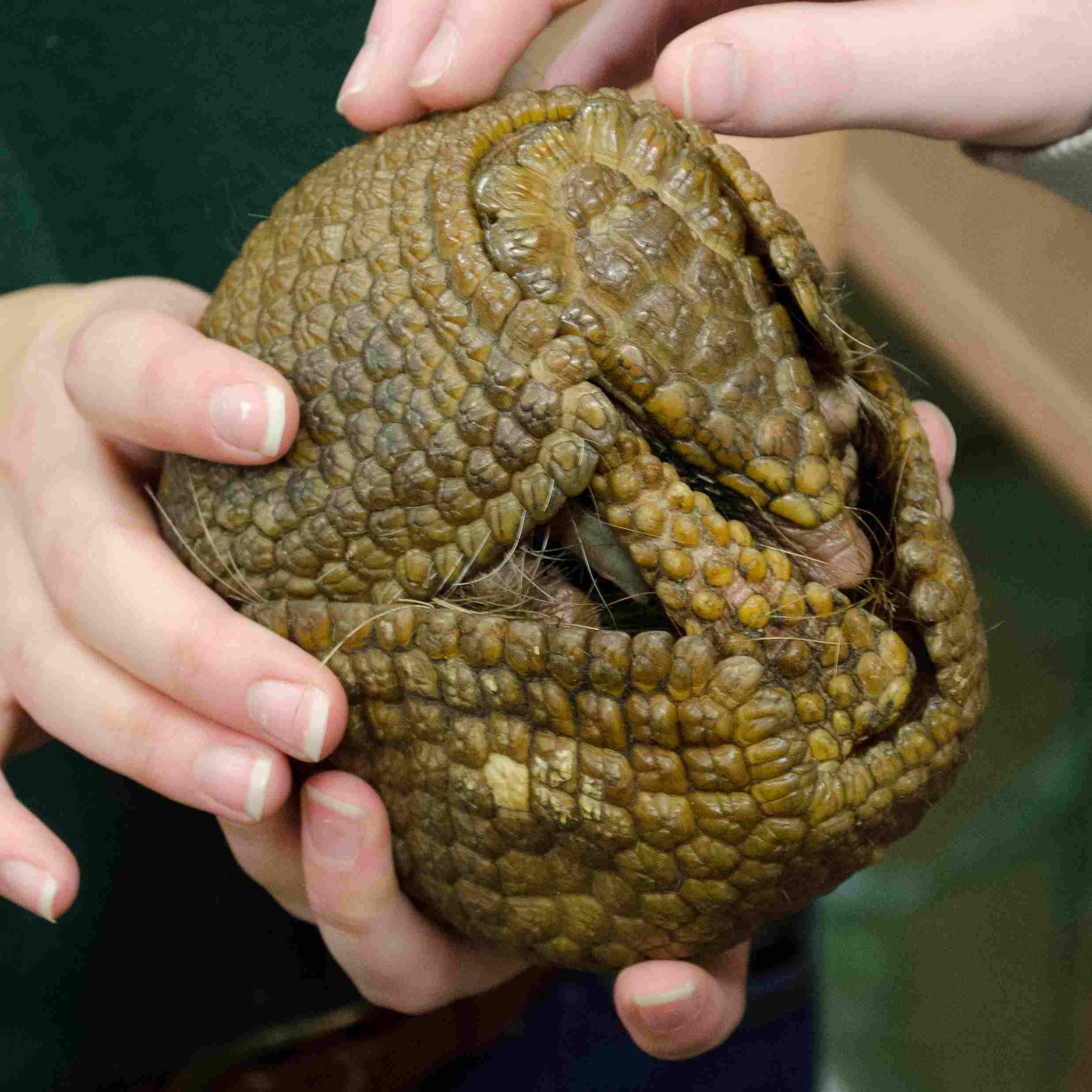
Armadillo:
Bony armor provides protection.
Aardvark:
Quick digging ability to escape predators.
Comparison:
Armadillos rely on their armor, whereas aardvarks use agility and digging as defense mechanisms.
Ecological Implications:
Defensive strategies impact predator-prey dynamics and survival rates.
8. Speed (Km/hour or Mile/hour)
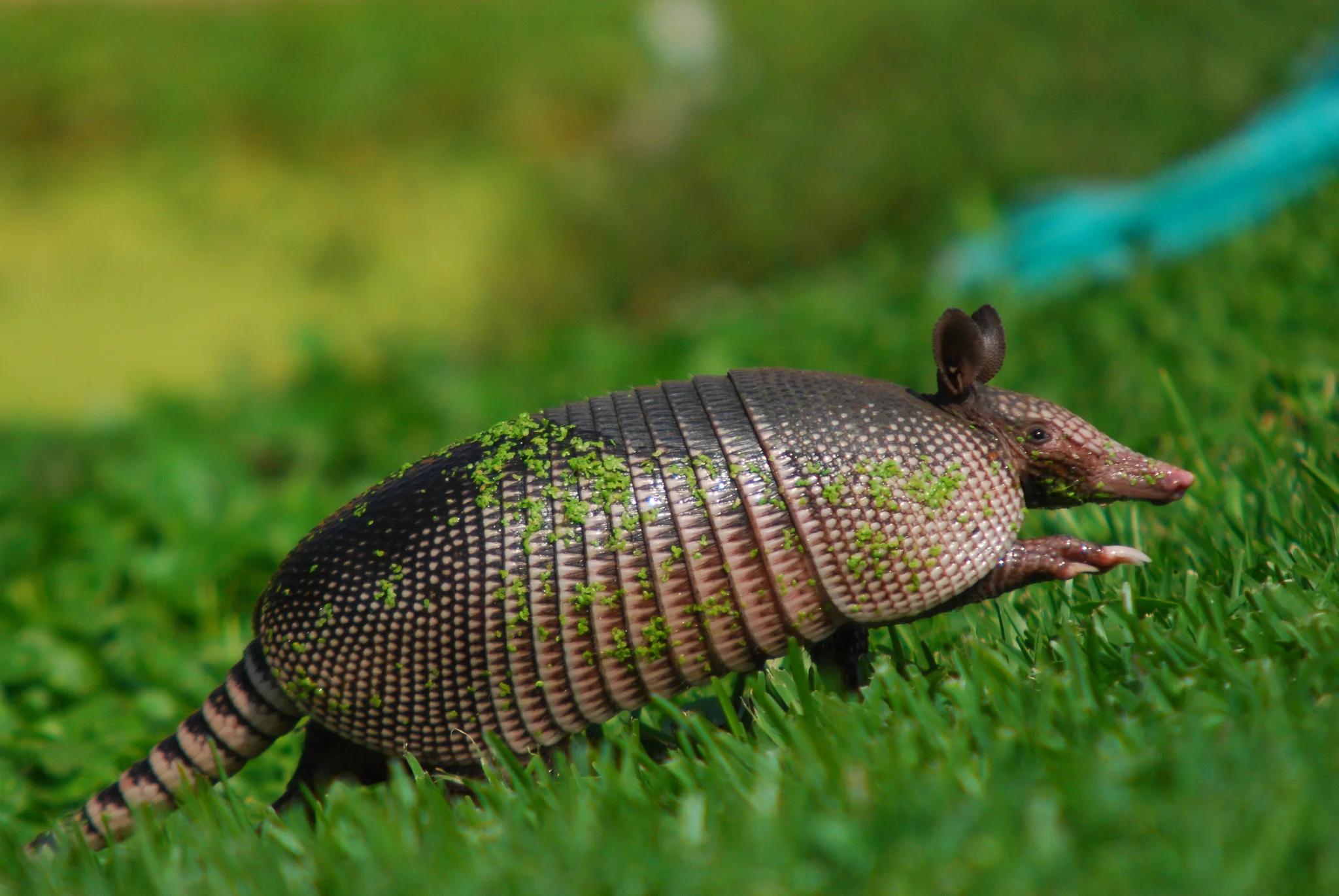
Armadillo:
Limited speed, generally slow-moving.
Aardvark:
Faster than expected for their size; can reach speeds of 30 km/h (18 mph).
Comparison:
Aardvarks exhibit greater speed compared to armadillos.
Ecological Implications:
Speed influences hunting efficiency, evasion of predators, and territory exploration.
9. Agility
Armadillo:
Moderately agile, especially in digging.
Aardvark:
Highly agile, facilitated by a slender body and strong limbs.
Comparison:
Aardvarks display superior agility compared to armadillos.
Ecological Implications:
Agility affects their ability to navigate varied terrains, locate food, and avoid predators.
10. Senses
Armadillo:
Limited eyesight, rely on a keen sense of smell.
Aardvark:
Excellent sense of smell, complemented by good hearing.
Comparison:
Both rely on a strong sense of smell, but aardvarks have better overall sensory capabilities.
Ecological Implications:
Sensory adaptations contribute to efficient foraging and predator detection.
11. Overall Physical Capacity
Armadillo:
Specialized for digging and insectivorous feeding.
Aardvark:
Well-adapted for digging into termite mounds.
Comparison:
Both possess unique physical capacities tailored to their ecological niches.
Ecological Implications:
Physical capacities shape their roles within ecosystems and interactions with other species.
12. Habitat Preference(s) and Geographic Region
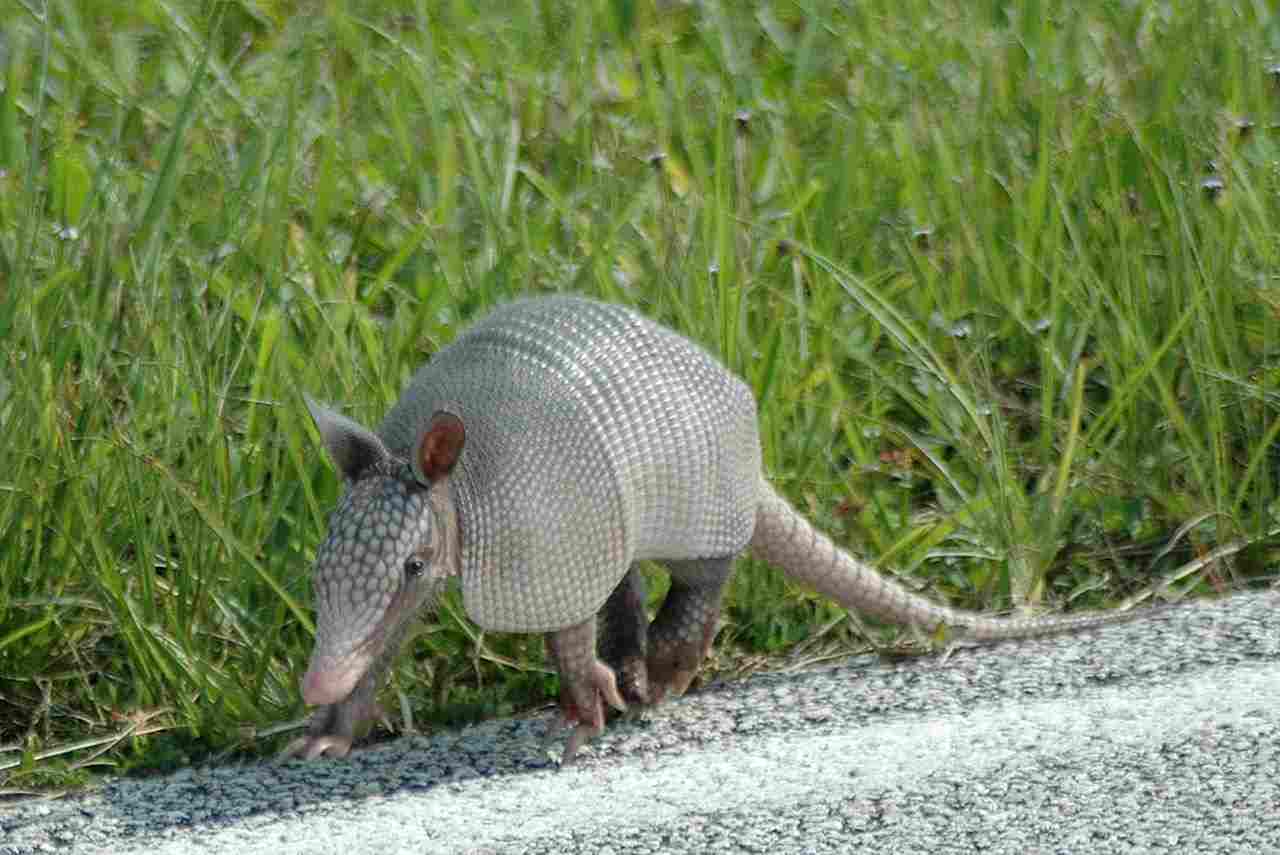
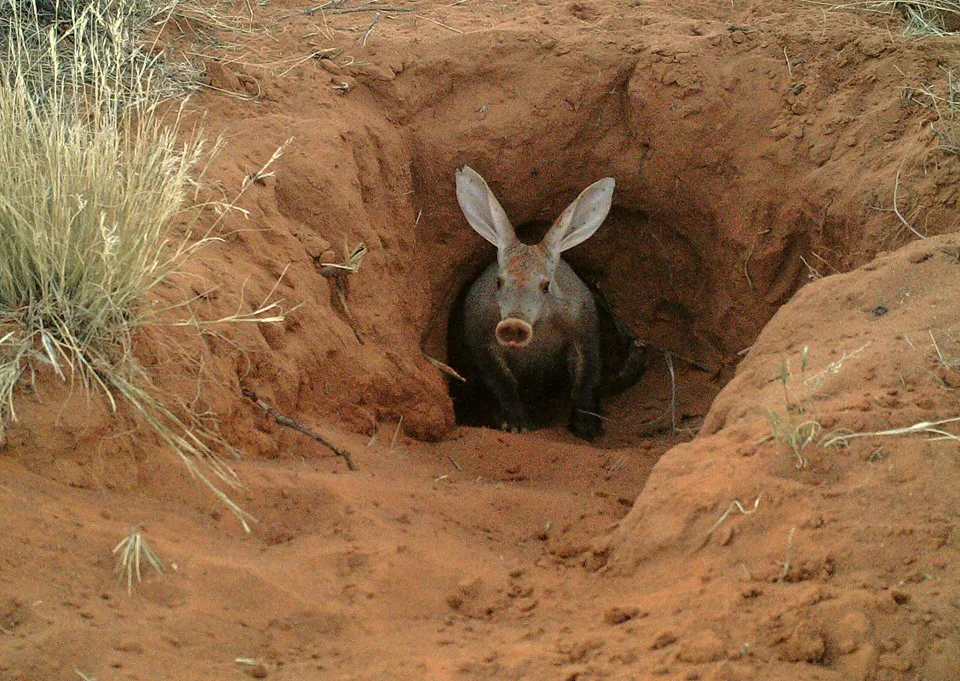
Armadillo:
Diverse habitats, including grasslands, forests, and deserts; found in the Americas.
Aardvark:
Primarily in savannas and grasslands of Africa.
Comparison:
Armadillos exhibit a broader habitat range compared to aardvarks.
Ecological Implications:
Habitat preferences influence ecosystem dynamics and biodiversity.
13. Tracks
Armadillo:
Clawed tracks with distinctive patterns.
Aardvark:
Distinctive three-toed imprints.
Comparison:
Unique tracks aid in species identification and tracking.
Ecological Implications:
Tracking contributes to ecological research, helping understand distribution and behavior.
14. Lifespan
Armadillo:
Varies by species, generally 4 to 30 years.
Aardvark:
Typically 10 to 20 years.
Comparison:
Lifespan varies, with some armadillo species having longer lifespans than aardvarks.
Ecological Implications:
Lifespan influences population dynamics and reproductive strategies.
15. Mode of Feeding
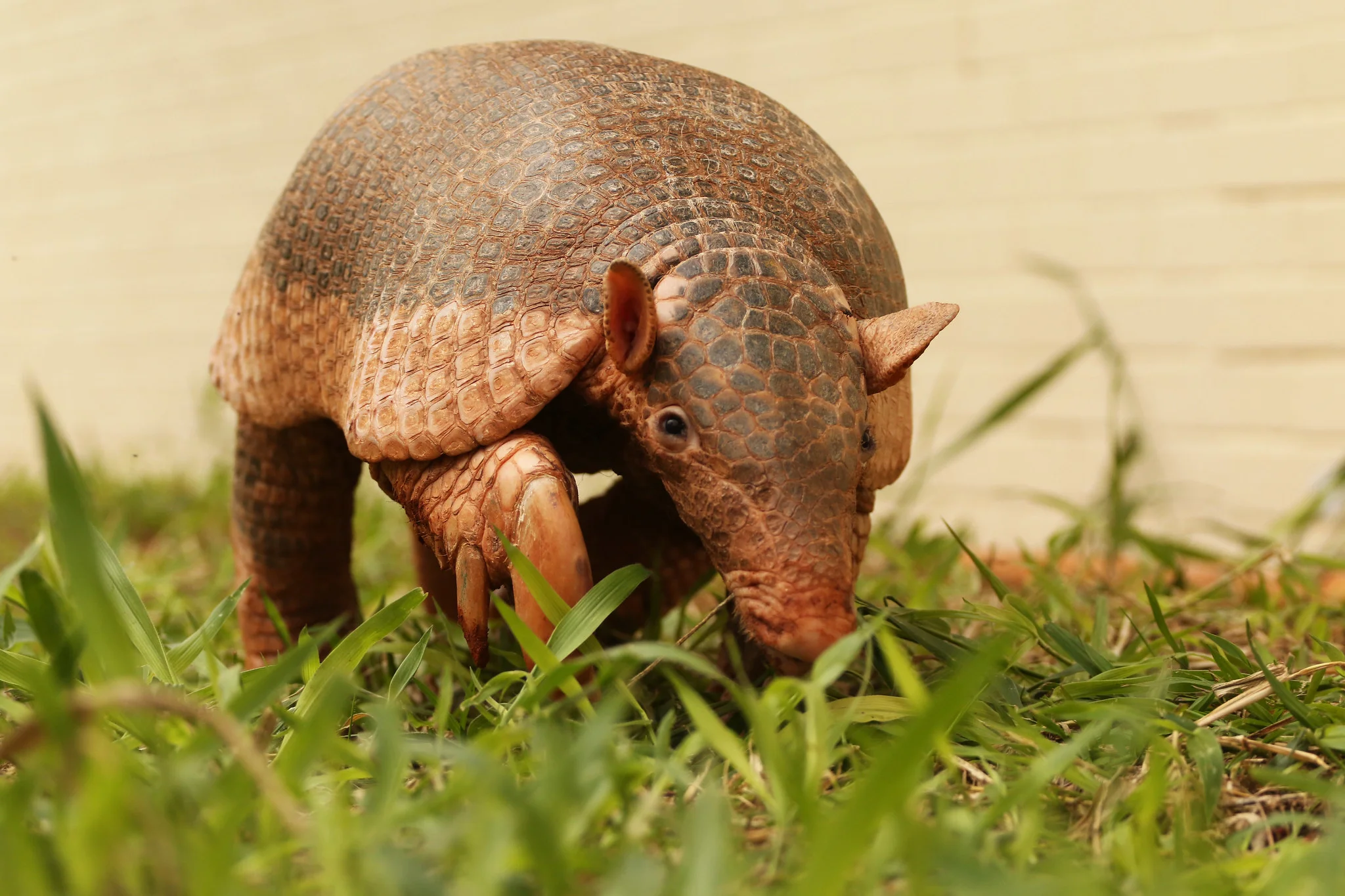
Armadillo:
Insectivorous, feeding on ants, termites, and other small invertebrates.
Aardvark:
Myrmecophagy, specializing in termites and ants.
Comparison:
Both are insectivores, with aardvarks specializing in termites.
Ecological Implications:
Feeding habits impact insect populations and ecosystem balance.
16. Intelligence
Armadillo:
Limited cognitive abilities, focused on survival instincts.
Aardvark:
Moderate intelligence, demonstrated in foraging strategies.
Comparison:
Aardvarks exhibit slightly higher intelligence than armadillos.
Ecological Implications:
Intelligence influences problem-solving, foraging efficiency, and adaptation to changing environments.
17. Social Behavior
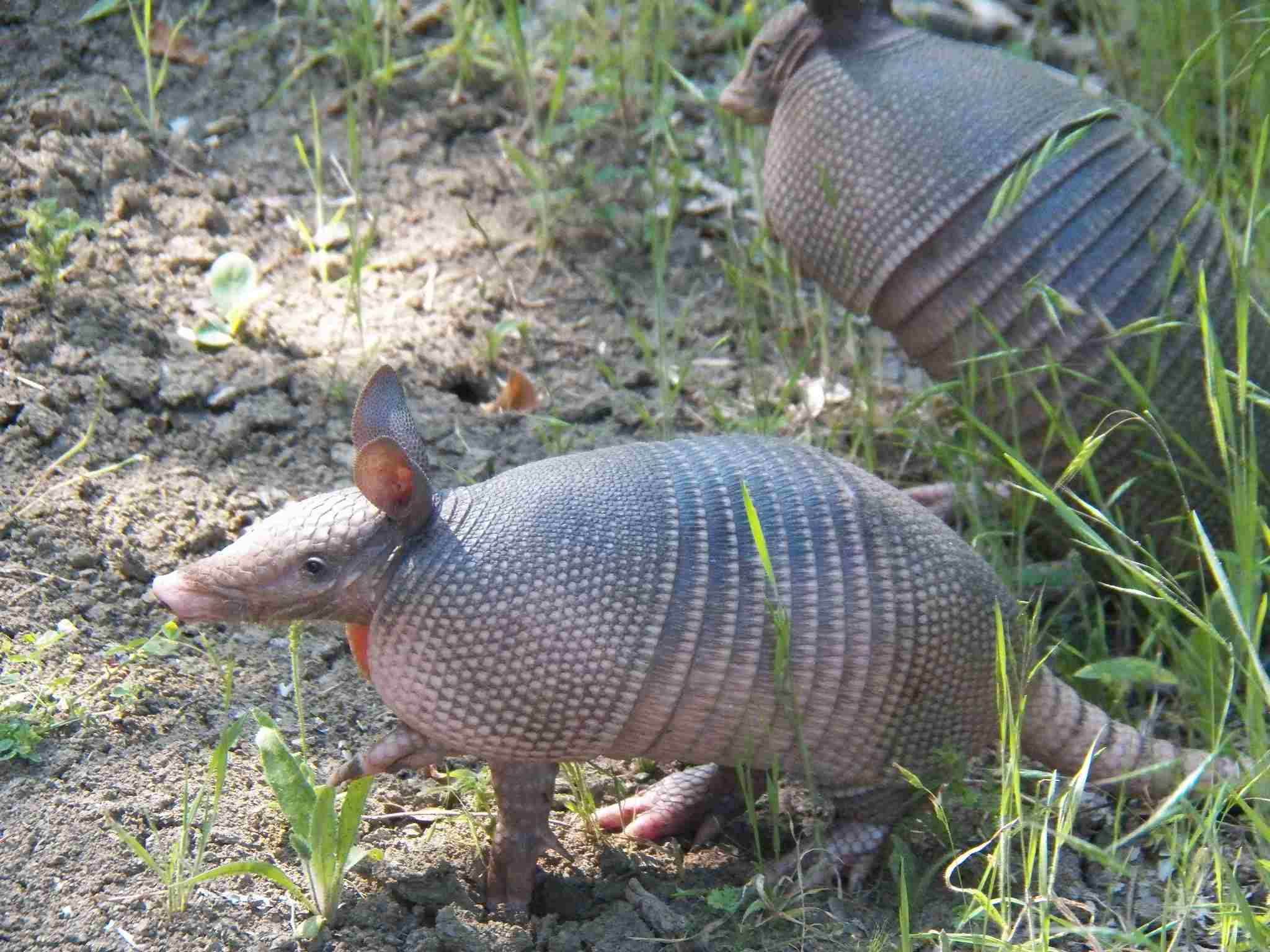
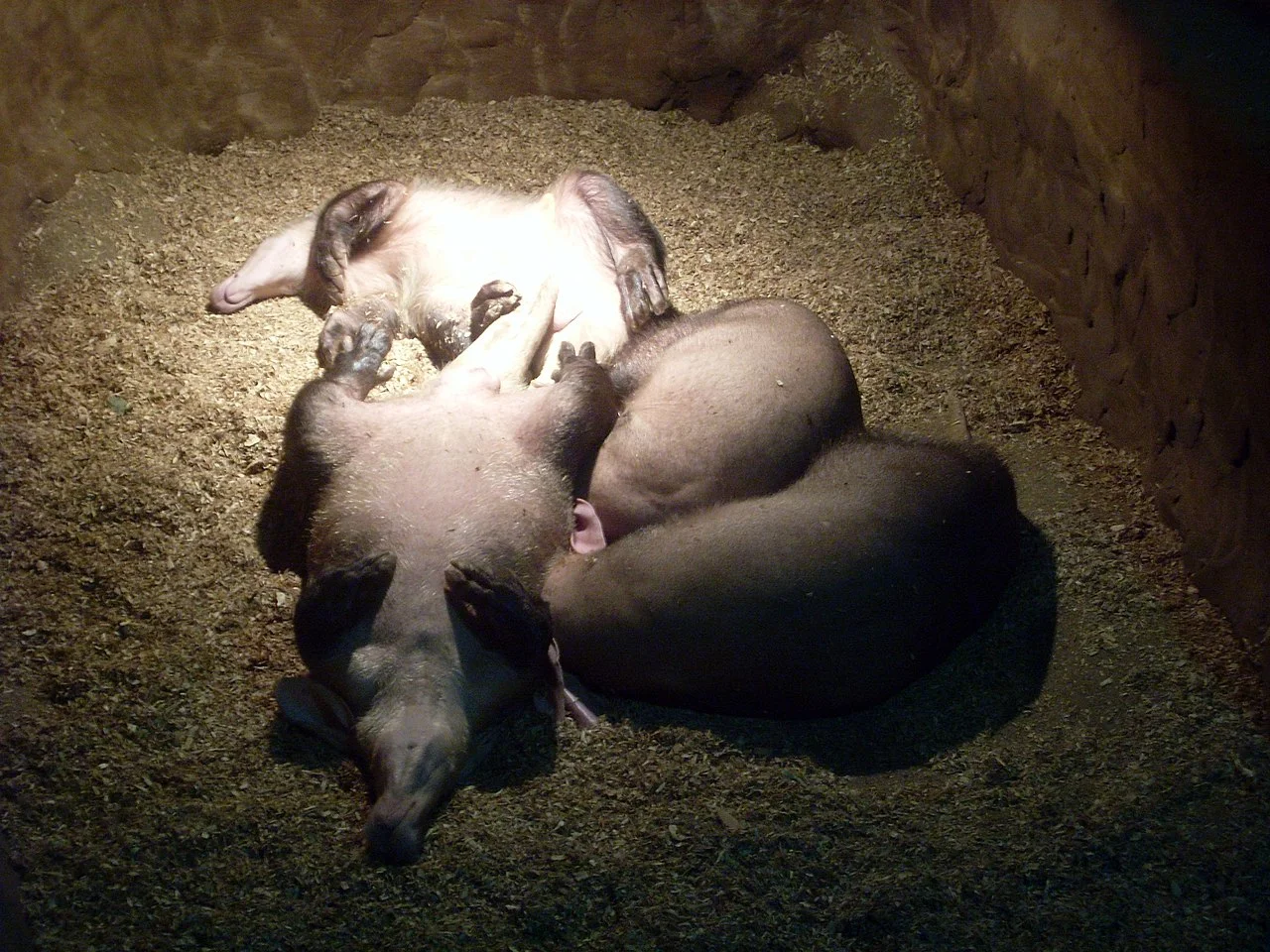
Armadillo:
Typically solitary, with minimal social interactions.
Aardvark:
Mainly solitary, occasional social interactions during mating.
Comparison:
Both species are predominantly solitary, with limited social behaviors.
Ecological Implications:
Social dynamics influence territory establishment, mating rituals, and resource competition.
18. Mode of Reproduction
Armadillo:
Typically gives birth to litters of identical quadruplets.
Aardvark:
Single offspring born after a gestation period of about seven months.
Comparison:
Armadillos reproduce through litters, while aardvarks have single births.
Ecological Implications:
Reproductive strategies impact population growth and resource competition.
19. Parental Behavior
Armadillo:
Limited parental care; offspring become independent quickly.
Aardvark:
Mother provides care for the single offspring for an extended period.
Comparison:
Aardvarks exhibit more extended parental care compared to armadillos.
Ecological Implications:
Parental behavior affects offspring survival rates and contributes to population stability.
20. Proximity to Human-Inhabited Areas
Armadillo:
Some species adapt to urban environments, often found near human habitats.
Aardvark:
Typically avoids human-inhabited areas due to their natural habitats.
Comparison:
Armadillos show more adaptability to human proximity than aardvarks.
Ecological Implications:
Human interaction can impact both species, affecting their behavior and survival.
21. Behavior Toward Humans
Armadillo:
Generally shy but may display defensive behavior if threatened.
Aardvark:
Typically avoids human contact but may become defensive if cornered.
Comparison:
Both species tend to avoid humans, but armadillos may show less defensive behavior.
Ecological Implications:
Human interactions can influence stress levels and survival strategies in these species.
22. Danger Posed to Humans
Armadillo:
Generally not dangerous to humans; may carry diseases like leprosy.
Aardvark:
Not inherently dangerous; may become defensive if provoked.
Comparison:
Neither species poses significant danger to humans under normal circumstances.
Ecological Implications:
Limited danger to humans allows for coexistence in certain environments.
23. Associated Precautions
Armadillo:
Caution advised due to potential disease transmission; avoid direct contact.
Aardvark:
Precautions include maintaining a safe distance to prevent stress or defensive behavior.
Comparison:
Similar precautions apply to both species, emphasizing the need for respect and distance.
Ecological Implications:
Human precautions contribute to the well-being of these species in shared environments.
24. Conservation Status
Armadillo:
Varied conservation statuses; some species are of least concern, while others face threats.
Aardvark:
Near Threatened due to habitat loss and declines in termite populations.
Comparison:
Aardvarks face a higher risk of endangerment compared to some armadillo species.
Ecological Implications:
Conservation efforts are crucial to maintain biodiversity and ecological balance.
*Summary of Comparison
Appearance:
Armadillos: Armored, bony plates with leathery skin.
Aardvarks: Slender, furless bodies with a long snout.
Size:
Armadillos: 5-59 inches (species dependent).
Aardvarks: 4-8 feet.
Weight:
Armadillos: 3 oz to 120 lbs.
Aardvarks: 110-180 lbs.
Bite Force (PSI):
Armadillos: Limited for insectivorous diet.
Aardvarks: Notable for breaking into termite mounds.
Physical Offensive Advantages:
Armadillos: Clawed forelimbs for digging.
Aardvarks: Sharp claws for termite mound excavation.
Physical Defensive Advantages:
Armadillos: Bony armor protection.
Aardvarks: Quick digging to escape predators.
Speed:
Armadillos: Generally slow-moving.
Aardvarks: Can reach speeds of 30 km/h (18 mph).
Agility:
Armadillos: Moderately agile, especially in digging.
Aardvarks: Highly agile with a slender body.
Senses:
Both rely on a strong sense of smell, with aardvarks having better overall sensory capabilities.
Overall Physical Capacity:
Both possess unique physical capacities tailored to their ecological niches.
Habitat Preference(s) and Geographic Region:
Armadillos: Diverse habitats in the Americas.
Aardvarks: Primarily in African savannas and grasslands.
Tracks:
Armadillos: Clawed tracks.
Aardvarks: Distinctive three-toed imprints.
Lifespan:
Armadillos: 4-30 years.
Aardvarks: 10-20 years.
Mode of Feeding:
Both are insectivores, with aardvarks specializing in termites.
Intelligence:
Aardvarks exhibit slightly higher intelligence than armadillos.
Social Behavior:
Both are predominantly solitary with limited social behaviors.
Mode of Reproduction:
Armadillos give birth to litters; aardvarks have single offspring.
Parental Behavior:
Aardvarks exhibit more extended parental care than armadillos.
Proximity to Human-Inhabited Areas:
Armadillos show more adaptability to human proximity than aardvarks.
Behavior Toward Humans:
Both tend to avoid humans, with armadillos potentially showing less defensive behavior.
Danger Posed to Humans:
Neither species poses significant danger under normal circumstances.
Associated Precautions:
Similar precautions apply to both species, emphasizing the need for respect and distance.
Conservation Status:
Armadillos have varied statuses; aardvarks are Near Threatened.
Conclusion
I. Similarities:
Both armadillos and aardvarks exhibit adaptations for insectivorous diets and share solitary behaviors.
II. Differences:
Differences include reproductive strategies, parental care, adaptability to human proximity, and conservation statuses. Understanding these distinctions is vital for effective conservation and ecological management.
